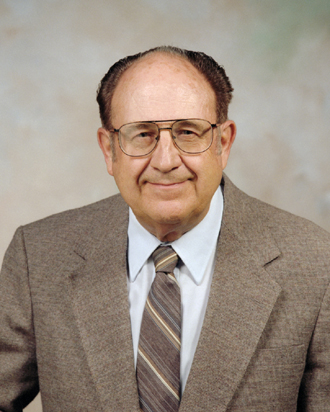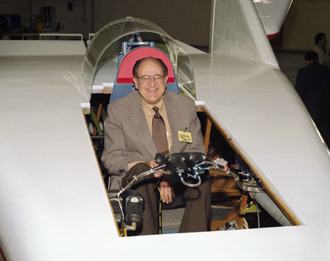 Robert Dale Reed, a distinguished NASA aeronautics researcher who pioneered Lifting Body and remotely piloted research aircraft programs at the Dryden Flight Research Center in the 1960s and 70s has died. Reed, 75, passed away Friday, March 18 in San Diego due to complications of cancer. Memorial arrangements are pending.
Robert Dale Reed, a distinguished NASA aeronautics researcher who pioneered Lifting Body and remotely piloted research aircraft programs at the Dryden Flight Research Center in the 1960s and 70s has died. Reed, 75, passed away Friday, March 18 in San Diego due to complications of cancer. Memorial arrangements are pending.
Image Right: Robert Dale Reed, aerospace engineer, NASA Dryden Flight Research Center. NASA Photo: EC98-44606-1.
Although he worked on numerous aeronautical research programs during his almost 52-year career at NASA Dryden, Reed is best known for his major contributions to aeronautical research in the initiation and development of the Lifting Body and Remotely Piloted Research Vehicle (RPRV) programs.
Reed began his employment at NASA Dryden, then known as the NACA High Speed Flight Research Station, in 1953, following his graduation from the University of Idaho with a degree in mechanical engineering. Throughout his long career at the NASA center, first as a civil servant and later as a contract engineer, Reed brought an outstanding degree of creativity to a variety of cutting-edge aeronautical concepts.
The Lifting Body program grew out of Reed’s confidence that a wingless, low lift-to-drag craft could serve as an orbiting vehicle equipped to re-enter earth’s atmosphere and land safely. In the Lifting Body concept, the entire vehicle becomes a controllable airfoil, eliminating the need for wings. Although officials of the Apollo moon-landing program had rejected the lifting body as the re-entry vehicle into the Earth’s atmosphere as too risky and had opted for a capsule, Reed had confidence that the lifting body concept would work. With backing from Paul Bikle, then director of the Flight Research Center, Reed was a prime mover in development of the prototype lightweight M2-F1 Lifting Body that flew successfully in 1963.
The success of the unpowered M2-F1 led to the development of the rocket-powered lifting bodies, such as the M2-F2 and M2-F3, HL-10, and the Air Force X-24A and X-24B. Reed’s Lifting Body research provided guaidance to the design of the Space Shuttle.
As manager of innovative programs, Reed’s fascination with using model drone airplanes for flight research led to the Remotely Piloted Research Vehicle (RPRV) Program. In place of the model aircraft operator’s simple switch console, Reed substituted an actual ground-based cockpit containing all of the flight instruments and sensors of a fully equipped airplane. Reed tested his concept with the Hyper III, the first RPRV to have a test pilot fully in the loop, using a radio uplink. Reed carried the concept further with the PA-30 and 3/8th scale F-l5, both of which added a computer control system in conjunction with the ground-based cockpit.
 Reed held a patent for his 1977 invention of the Mini-Sniffer – a foldable Mars airplane with hydrazine-fueled engine designed to ride aboard a Viking spacecraft and be remotely dropped to explore the planet from low altitude. If used as Reed had envisioned, the craft would have performed aerial exploration until its fuel ran out, then land at a desirable spot to continue feeding back information through the Viking Orbiter, like the familiar Mars rovers.
Reed held a patent for his 1977 invention of the Mini-Sniffer – a foldable Mars airplane with hydrazine-fueled engine designed to ride aboard a Viking spacecraft and be remotely dropped to explore the planet from low altitude. If used as Reed had envisioned, the craft would have performed aerial exploration until its fuel ran out, then land at a desirable spot to continue feeding back information through the Viking Orbiter, like the familiar Mars rovers.
Image Left: Often called the “Father of the Lifting Bodies,” NASA aerospace engineer Dale Reed enjoys a moment in the cockpit of the restored wingless M2-F1 in 1997. NASA Photo: EC97-44302-13.
Early in his career, Reed was responsible for aerodynamics loads measurements on the early X-series research aircraft and well as aerodynamics heating measurements on the X-15 rocket plane. Reed also held a patent for his invention of a solar guidance system that is capable of steering an airplane by using the sun as reference. Later work included experiments in gyroless autopilots, deep-stall flight tests, and free flight airfoils.
Following his retirement from NASA in 1985, Reed worked for Lockheed Advanced Development Projects for four years, managing design, development and flight test of various hypersonic and high-altitude aircraft concepts. He returned to NASA Dryden later as a contract aerospace engineer, contributing his engineering expertise to the HyFlex, Apex and Spacecraft Autoland Flight Experiments. In recent years, Reed was employed part-time by Analytical Services and Materials (AS&M), Inc., at NASA Dryden on a variety of projects, including the X-33, X-36 and X-38 research vehicles, two of which were lifting body configurations, and the Beamed Laser Power Flight Demonstration in 2002 – 2003. In all, Reed managed 19 projects and designed a dozen aircraft during his career.
A member of the American Institute of Aeronautics and Astronautics, Reed wrote numerous technical reports and papers stemming from his work. He authored the book “Wingless Flight” on the Lifting Body flight research program published by the NASA History Office in 1997 and republished later by the University Press of Kentucky. Reed was awarded the NASA Exceptional Service Medal in 1967 for his work in initiating the Lifting Body research program, and was designated as a Distinguished NASA Aeronautical Researcher by the Experimental Aircraft Association. He received the AIAA’s Awards for Outstanding Technical Paper in 1968 and outstanding Technical Contributor in 1967. More recently, the Society of Flight Test Engineers presented its Kelly Johnson award to Reed for his lifetime contributions to aeronautics.
A long-time resident of Lancaster, Calif., Reed leaves his wife Donna and four children, Cristy, Charmaine, Chariann and Robert.
-NASA-
PHOTO EDITORS: Publication-quality photos of Dale Reed to support this release are available for downloading from the Internet at: http://www.dfrc.nasa.gov/Gallery/Photo/People/index.html.
– end –
text-only version of this release
To receive status reports and news releases issued from the Dryden Newsroom electronically, send a blank e-mail message to dfrc-subscribe@newsletters.nasa.gov. To unsubscribe, send a blank e-mail message to dfrc-unsubscribe@newsletters.nasa.gov. The system will confirm your request via e-mail.
Dryden Flight Research Center
P.O. Box 273
Edwards, California 93523
Phone 661/276-3449
FAX 661/276-3566
Alan Brown
NASA Dryden Flight Research Center
Phone: 661/276-2665
alan.brown@dfrc.nasa.gov

























